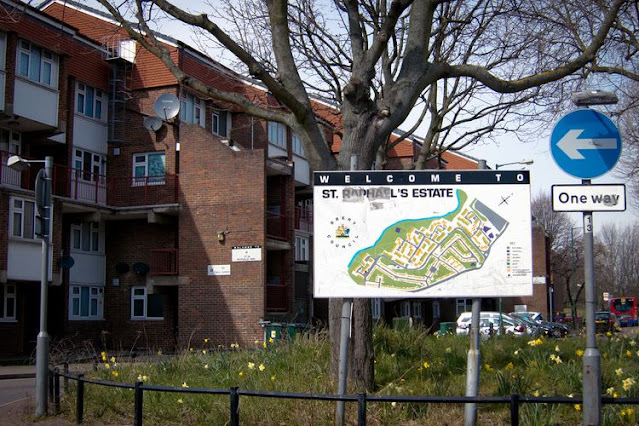Wembley Matters has recently pubished guests posts by Brent Council tenants of the St Raphael's and South Kilburn Estates LINK as well as the findings of the Regulator of Social Housing on brent Council's serious failings in housing management.
Asif Zamir of St Raphael's wrote to Spencer Randolph, Brent Director of Housing about the issues. His reply is below along with Asif's response.
Dear Asif Zamir,
Thank you for taking the time to write on behalf of the residents of St Raphael’s Estate and sharing your concerns regarding the condition and safety of your homes on the estate. I want to begin by acknowledging the distress that the recent findings from the Regulator of Social Housing (RSH) judgment, have understandably caused. Please know that we take these matters extremely seriously, and yours and all of our tenants safety and well-being remain our highest priority.
When we identified inconsistencies in our safety data earlier this year, we acted swiftly and responsibly by referring ourselves to the RSH. This was not a decision taken lightly, but we believed it was the right and transparent course of action to begin addressing the issues at hand with the seriousness they deserve.
Since then, we have taken a number of urgent steps. We appointed an external health and safety consultancy with experience in supporting organisations in similar situations. They have engaged directly with the RSH and are supporting us in making rapid and lasting improvements. Their work includes helping us to verify and update our compliance data and to ensure all necessary safety checks are clearly recorded and acted upon.
We have also commissioned an audit of our systems and data, due to conclude in mid-July. This review will identify the root causes of the failings and inform a detailed recovery plan, underpinned by clear timelines and actions to ensure accountability.
In the meantime, we are reviewing all compliance data and building safety actions using a risk-based approach, prioritising high-risk issues. To help us move at pace, we are increasing capacity in our teams, including recruiting additional officers and contractors dedicated to this work.
We are also taking visible action across the Borough and on St. Raphael’s Estate. Over the coming weeks, residents will see more surveyors and contractors on estates as we carry out:
A new round of Stock Condition Surveys to update our understanding of the condition of every home
Fire Risk Assessments for all blocks of flats on estates
Pre and post-inspections to make sure building safety actions are completed to a high standard
We will communicate clearly and in advance about any visits to our tenants homes or buildings, and we are committed to improving how we engage with you going forward.
Finally, I want to reiterate that Brent Council is fully committed to learning from these failings and to restoring your confidence in the safety and quality of your homes. We know that words alone are not enough, you deserve to see real, sustained improvements, and we are determined to deliver them.
Thank you again for sharing your concerns.
Yours sincerely,
Spencer Randolph
Director – Housing Services
Dear Spencer Randolph,
Thank you for your prompt response to my letter and for acknowledging the concerns of St. Raphael's Estate residents following the Regulator of Social Housing (RSH) findings. We appreciate your transparency in referring Brent Council to the RSH, and we understand that steps are being taken to address the issues.
While we acknowledge the measures you've outlined, including the appointment of an external consultancy, the audit of systems, and increased capacity within your teams, the residents of St. Raphael's Estate require reassurance and immediate, tangible results to ensure their safety.
The recent fire on St. Raphael's Estate in May, which tragically led to the tragic loss of life of our neighbours, has significantly heightened anxieties among residents. This incident demands an urgent and thorough investigation into why the building experienced accelerated combustion and further to this why the fire was not contained and spread to the ajoining property. We need clear answers regarding potential concerns with insulation, cladding, or the overall build quality of the affected building and others on the estate. Furthermore, we are deeply concerned about a potential correlation between this tragic incident and the previously identified lack of safety data from Brent Council.
While the planned surveys and risk assessments are a welcome step, residents need to see these actions translated into fast results. The fear of another incident is very real, and waiting for audits to conclude in mid-July and for the implementation of recovery plans does not alleviate the immediate anxieties.
We urge Brent Council to:
Prioritise the investigation into the St. Raphael's Estate fire, providing residents with immediate updates on preliminary findings regarding the cause of accelerated combustion and any links to building materials or construction.
Share a clear and accelerated timeline for addressing the most critical safety issues identified by the RSH and through your ongoing reviews, particularly those related to fire safety.
Demonstrate visible and proactive measures on the estate now, beyond just surveys, to address any immediate high-risk concerns.
Establish a direct and ongoing communication channel with residents to provide transparent updates on progress and address specific concerns arising from the fire and the RSH findings.
We understand that systemic changes take time, but the safety and peace of mind of St. Raphael's Estate as well as residents from wider Brent cannot wait. We look forward to seeing swift and decisive action that translates your commitment into demonstrable improvements in the safety and quality of our homes.
Yours sincerely,
Asif Zamir
An old map of the original estate
Meanwhile Pete Firmin, a tenant on the South Kilburn Estate, has submitted a Freedom of Information request on the remit and makeup of the housing Advisory Board. LINK
Dear Brent Borough Council,
I understand a Housing Advisory Board has been set up. Can you please tell me:
1) Its remit.
2) Its composition - who is on the board and their qualification for doing so.
3) If there are residents on this board, how they were recruited and what qualifications they were required to have to be on the board.
4) All correspondence relating both to the establishment of this board and the recruitment of its members.








































